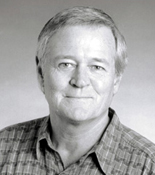In memoriam: John (Jack) I. Yellot

In memoriam: John (Jack) I. Yellot
- March 2, 2020
- Professor of Cognitive Sciences, UC Irvine | May 8, 1938-December 4, 2019
 It is with deep sorrow that we announce the passing of John I. (Jack) Yellott. Jack
was professor emeritus from the Department of Cognitive Sciences at UC Irvine and
much beloved by all who were lucky enough to have known him.
It is with deep sorrow that we announce the passing of John I. (Jack) Yellott. Jack
was professor emeritus from the Department of Cognitive Sciences at UC Irvine and
much beloved by all who were lucky enough to have known him.
Jack got his Ph.D. from Stanford University in 1966. Before coming to UC Irvine, Jack was an assistant and then an associate professor in the psychology department at the University of Minnesota from 1966 – 1971, spending the year of 1970–71 as a visiting member of the Institute for Advanced Study at Princeton. He then joined the School of Social Sciences at UC Irvine where he spent the rest of his career. He was among the initial group of mathematical social science faculty that created one of the vital intellectual centers in the early history of social sciences at Irvine. Jack was the founding chair of the Department of Cognitive Sciences, serving in that role from 1986-91 and then again later from 1995-99. He became professor emeritus in 2002. Jack was an active member of the Institute for Mathematical Behavioral Sciences in the School of Social Sciences from its inception in 1988 until his death.
Jack’s research focused on mathematical models of human information processing. The topics that interested him varied widely. Over the course of his career, he worked on retinal anatomy, texture perception, image processing, metacontrast masking, learning, reaction time, and choice and ranking. In his last years, Jack’s attention was focused on the possibility of creating visual stimuli that were precorrected for the optical phase distortions that occur when a human eye is out of focus--e.g., when a person who needs reading glasses tries to read without them. Using computer simulations, Jack demonstrated that correcting these distortions could greatly improve the legibility of defocused text. He also produced images of text with letters printed in such a way that subsequent defocus in the eye restored them to their proper shapes. As Jack’s theory predicts, when such text is viewed by an appropriately nearsighted person without his-or her glasses, it proves to be much easier to read than ordinary text. Before he died, Jack elaborated the mathematical theory that explains this improvement and establishes its quantitative parameters. The theory that has emerged provides a complete account of this type of phase-only deconvolution, and explains its characteristic properties and practical limitations. As this example illustrates, Jack was a master at using formal mathematics to provide deep insights into perception and cognition. He brought this same ingenuity and excitement to his demonstrations and explanations in the classroom.
We will miss his mind and the spirit he brought to everything he did.
Jack is survived by his wife Dorothea, his son John, his daughter, Carolyn and Carolyn’s son, Rhys, and daughter, Liberty.
Charles F. Chubb
UCI Professor of Cognitive Sciences
Barbara A. Dosher
UCI Distinguished Professor of Cognitive Sciences
Share on:


connect with us: